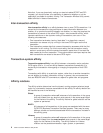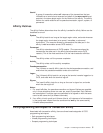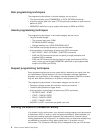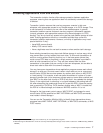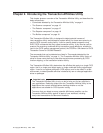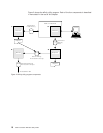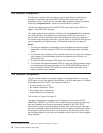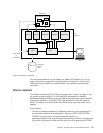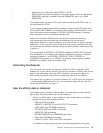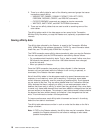
Chapter 2. Introducing the Transaction Affinities Utility
This chapter gives an overview of the Transaction Affinities Utility, and describes the
basic components:
v “Commands detected by the Transaction Affinities Utility” on page 11
v “The Scanner component” on page 12
v “The Detector component” on page 12
v “The Reporter component” on page 18
v “The Builder component” on page 18
The Transaction Affinities Utility is designed to detect potential causes of
inter-transaction affinity and transaction-system affinity for those users planning to
use the CICS dynamic routing facility. It can be used to detect programs using
EXEC CICS commands that may cause transaction affinity. It can also be used to
create a file containing combined affinity transaction group definitions, suitable for
input to the CICS system management product, the CICSPlex SM element of CICS
Transaction Server for OS/390 Release 3.
The commands that can be detected are listed in “Commands detected by the
Transaction Affinities Utility” on page 11. The Transaction Affinities Utility is also of
value for those users planning to use either asynchronous processing by CICS
function shipping, or the transaction isolation facility.
The Transaction Affinities Utility determines the affinities that apply to a single CICS
region: that is, a single pure target region or single combined routing region/target
region. It can be run against production CICS regions, and is also useful in a test
environment, to detect possible affinities introduced by new or changed application
suites or packages.
Important note
The Transaction Affinities Utility is only an aid to help you find any affinities in
your applications. Relate the output from the Transaction Affinities Utility to the
applications that contain affinities before deciding whether or not the
applications are suitable for CICS dynamic routing.
To ensure that you detect as many potential affinities as possible, use the
Transaction Affinities Utility against all parts of your workload, including
rarely-used transactions and abnormal situations.
© Copyright IBM Corp. 1994, 1999 9
|
|
|
|
|
|
|
|
|






